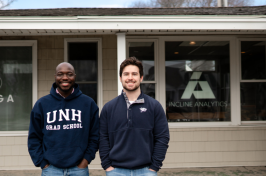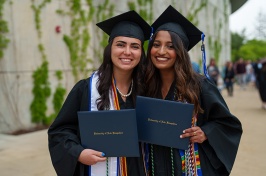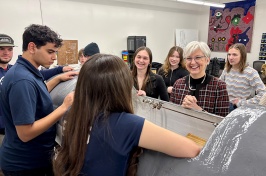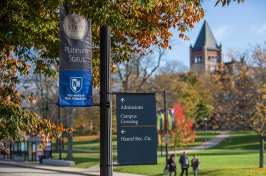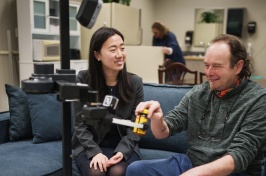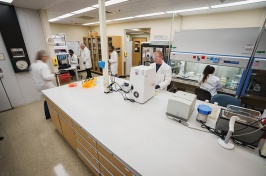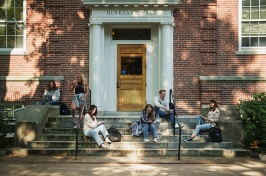
Tom Zhang, lecturer in mathematics at the University of New Hampshire
A new proof by University of New Hampshire mathematician Yitang “Tom” Zhang is being heralded as a breakthrough in the quest to solve one of the world’s oldest mathematical problems, one that many attribute to the Greek mathematician Euclid.
The proof takes aim at what’s known as the “twin prime conjecture,” which states that there are an infinite number of prime numbers (numbers divisible only by 1 and themselves) that are only two numbers apart, like 3 and 5 or 17 and 19. Zhang’s work, which has been described as proving a weak version of the twin prime conjecture, demonstrated that the number of prime pairs that are less than 70 million units apart is infinite.
While a gap of 70 million is a long way from a gap of 2, Zhang’s results are nonetheless attracting attention. “The jump from 2 to 70 million is nothing compared to the jump from 70 million to infinity,” said an article in the journal Nature. Mathematicians interviewed about the work have lauded the finding in distinctly un-mathematical terms: “Beautiful.” “Stunned.” “Astounded.”
“The prime numbers are, by definition, very simple. But there are very deep mysteries about them, and it’s been very difficult to prove this result,” says Zhang, who’s been a lecturer in the department of mathematics for nearly a decade. He acknowledges that the proof, while a fascinating academic puzzle to mathematicians, has no real practical application.
Zhang had been thinking about the twin prime conjecture for three years with no results. He says the proof came to him while he was visiting a friend in Colorado on vacation. He credits that state of relaxation for his insight. “I didn’t bring any notes, any books, any paper. And suddenly it came to me,” he says.
Moving forward, mathematicians – Zhang possibly among them -- will continue to try to shrink the gap between 70 million and 2 to prove the conjecture. In addition the UNH lecturer, who teaches undergraduate calculus as well as graduate-level number theory courses, has a few other problems he’d like to tackle.
After several days in the mathematical spotlight, Zhang is also looking forward to returning to the obscurity usually afforded those in his profession. “I’m used to being a shy person,” he says.
Zhang presented his proof in a lecture at Harvard University on Monday (May 13, 2013); a paper of his results, “Bounded gaps between primes,” has been accepted for publication by the journal Annals of Mathematics.
Originally published by:
UNH Today
-
Written By:
Staff writer | Communications and Public Affairs







